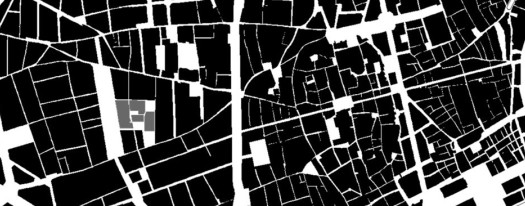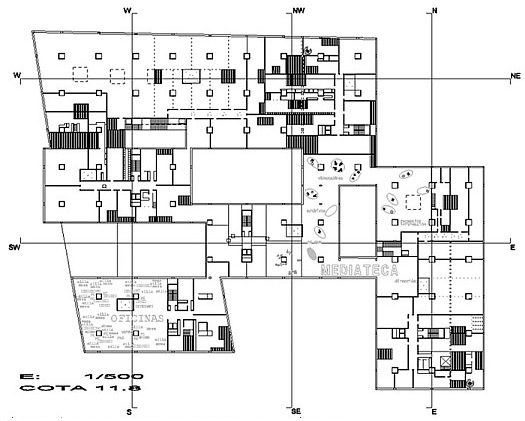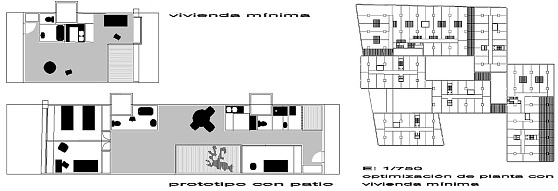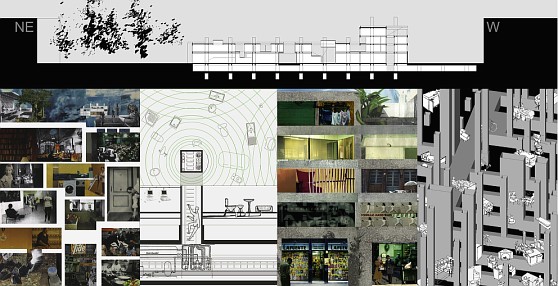| "a una ciudad en la que debo vivir le exijo: asfalto, limpieza de las calles, llave de entrada a un edificio, calefacción por aire y agua caliente. cómodo, ya me pongo yo mismo." karl kraus

Formulation of a project that enables a flexible but precise relationship between structure and event, based on the belief that residential, commercial, social and other aspects are attributes of use, rather an explicit consequence of a particular container.
In other words, relationships of causality are not valid in the study of human settlements: the activities that human beings carry out and the way they use the space around them do not a priori derive from the shape of the container that houses them. We see this in structures that have been used at different times as roman circus, cotton mill, housing cooperative, etc.

The study of new housing models, then, should not be linked to the shape of the container but to the creation of an open ended structure that allows its people, when they connect or attach to it, to begin any activity and to fancifully define its limits. We say fancifully because only the user herself, having secured a certain amount of inhabitable space (by renting or purchasing space in the way office blocks or industrial spaces are managed) , equipped with power and mechanical means (connected to the general utilities of the building, urban infrastructures... supported by the conduits of the utilities, complemented by the structural beams of the façade).
These images show the fortuitous, random, but properly architectural expression of the event (which would occur with each now contour of the volume).The limits of the possible variations or experimentation with the basic frame is not based on common sense considerations –who will do what, or how the space will be occupied in a particular way– but on the limits and potentialities that the structure itself generates. It is not about imagining delineated futures, but about doing, and inventing through action.

Occupying and dwelling are the same as settling in. It not pre-determined in advance, because it is a constant movement. Yes, it can be influenced by the design of the section that it takes place in. But if we talk not in terms of typology but of optimisation, a standard dwelling with a courtyard, for example, should only be seen as a default solution for a housing solution that is entrusted – but not delegated – to the creative work of the inhabitant in order to fully come into being. (There could also be default options for the ways in which the façade is resolved, the indoor furnishings, the tiling of wet areas... all listed and appraised, and made available in a kind of catalogue. Even today, many street level stores in Barcelona’s Raval still display their wares in the windows like supermarket shelves. And institutions that provide social housing also have lists of prototypes, with approximate building costs and an architect’s certificates).

This idea of optimisation is justified by the fact that the structural frame has been designed based on the 'existenzminimum' that uses the column/conduits for utilities. The conduits are placed the maximum distance apart that allows them to service the greatest number of minimum dwellings per floor (the single-person house or cell, around 45 m2: the standard dwelling), calculated to be an average centre distance of 10.5 meters (variable when adapted to a specific built environment); a construction depth of 21 m, from the second floor onwards (the occupation density drops the higher we go); with a free height between slabs of 3.4 m (lightweight and removable slabs, never structural). The conduits also enable services and connections: WC, telephone, natural gas, internet etc. (but without losing sight of habitability, or of the maintenance work that would begin from the time the foundations are laid, when the building is connected to the urban network).

|
